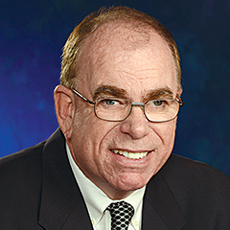

Mark Parkinson is clearly a glass-is-half-full kind of guy.
The president and CEO of the American Health Care Association just helped his members navigate two of the toughest years anyone in long-term care can remember.
As if that were not bad enough, operators must now deal with an inflationary uptick we haven’t seen the likes of in four decades. A lesser man might be warning us the end is near. Not Mark. In fact, his message is that happier days may soon be here again.
“I would be willing to place a friendly side bet that in 2025, and maybe in 2024, we will have census above pre-pandemic levels,” he recently told my colleague Jim Berklan.
Here’s my advice for anyone tempted to accept the offer: Don’t. Parkinson knows occupancy stats like Warren Buffet knows investing. When Mark predicts a census uptick, that’s about as safe a bet there is this side of Berkshire Hathaway.
By pretty much any objective measure, more heads in beds would be a good thing. It’s no secret that COVID-19 has done some terrible things to nursing homes, starting with emptying out facilities and eviscerating financials. So it’s a no-brainer that restoring depleted revenues via higher census levels would be great for providers, right? For the most part, yes.
However, there is one possible downside to this otherwise welcome development. A recovery could act as a disincentive to change.
As we’ve seen lately, necessity is the mother of an invention. Most facilities have had to make more adjustments in the past two years than they might have otherwise had to make in more than 10.
Infection control alone is much, much better. But that’s just for starters. Most operators are more efficient and better managed than they were before the pandemic.
So what happens if occupancy — now roughly 74.5% nationwide — hits the pre-pandemic 80% benchmark, or climbs even higher? To be sure, administrators, DONs, corporate folks and owners would have a little extra spring in their steps.
But what about the adapt-or-die mindset that has been so essential lately? As beds fill up, that sense of urgency may go down. In other words, complacency just might set in.
That’s not really a problem, so long as new threats and competitors stay away. Anyone care to bet that will happen?
John O’Connor is editorial director for McKnight’s.
Opinions expressed in McKnight’s Long-Term Care News columns are not necessarily those of McKnight’s.




